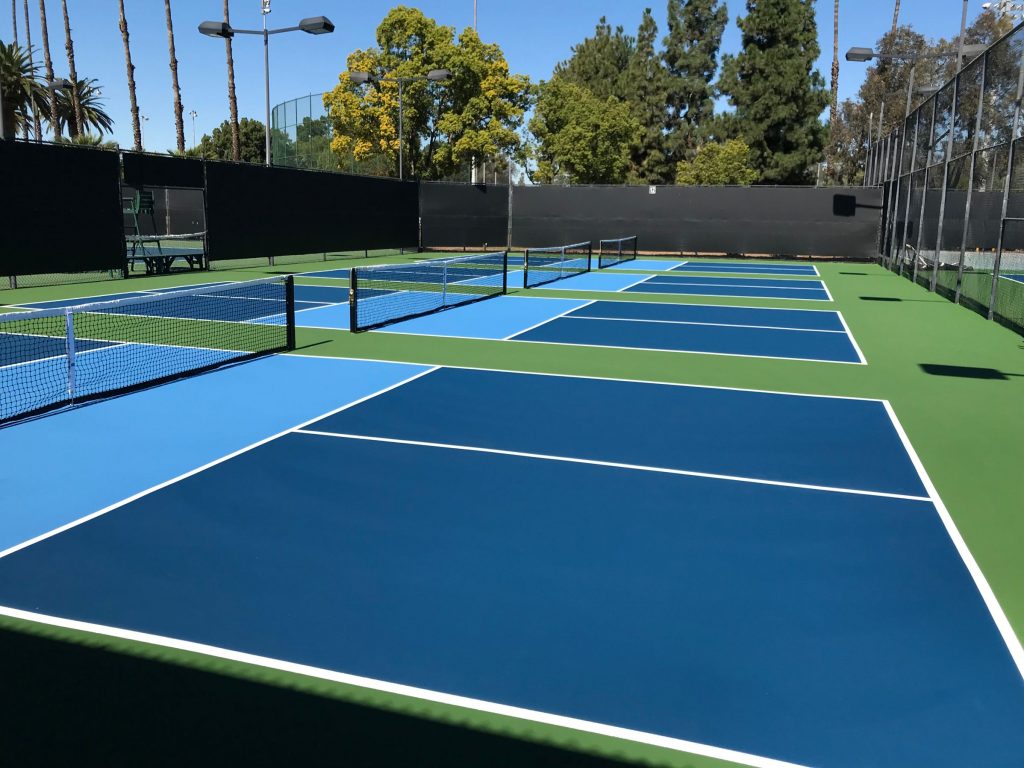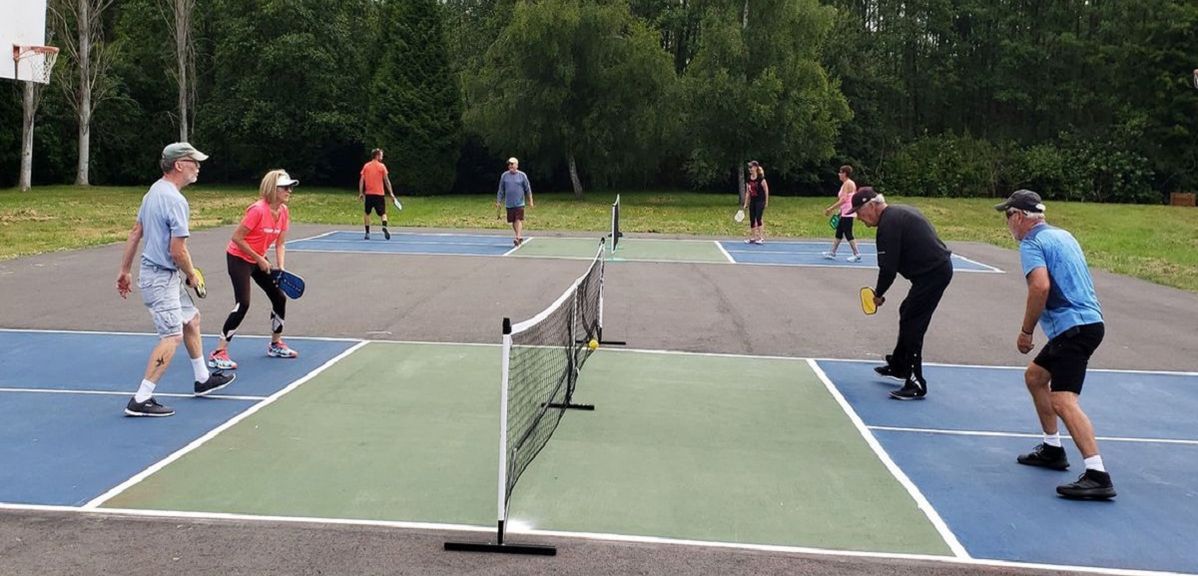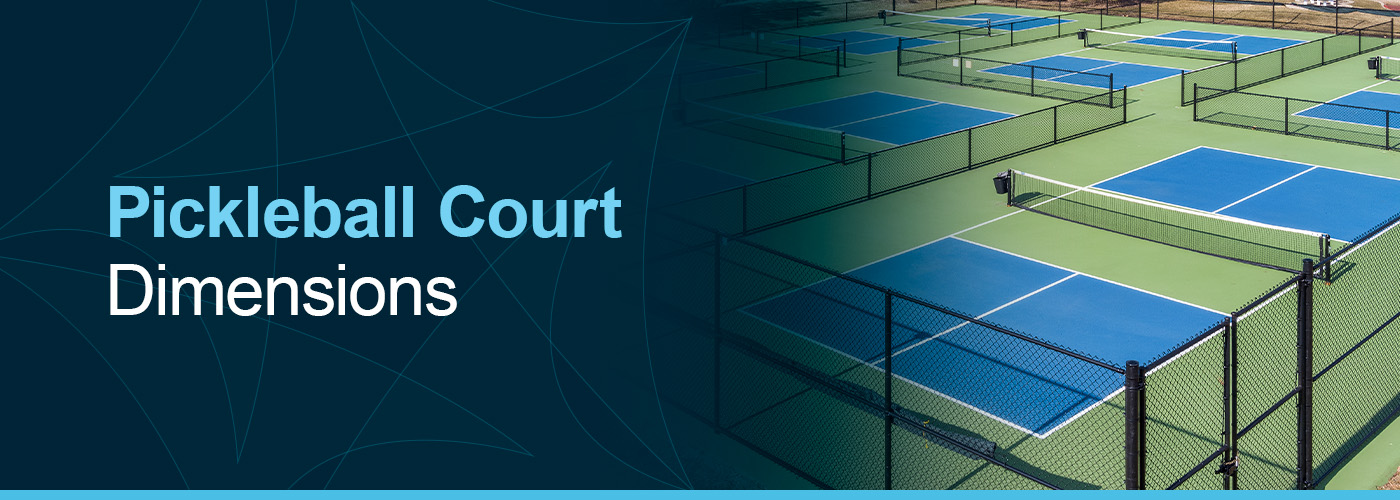From Layout to Complete: Your Guide to Structure a Pickleball Court
Developing a pickleball court is a diverse project that requires a strategic method, starting with the option of an ideal place that stabilizes access and interaction. The layout phase is critical, as it involves adhering to official court dimensions while taking into consideration external variables such as sunshine and noise. Material selection likewise plays a significant role in making certain the court's durability and efficiency. As we check out the necessary action in this process, you'll find what it requires to transform a concept into a totally functional facility that meets the requirements of its gamers.
Picking the Right Place
When intending to build a pickleball court, it is important to constantly think about the location, as it plays a vital function in the overall capability and enjoyment of the center. Picking a website that is easily obtainable improves engagement, guaranteeing that players can comfortably reach the court without significant traveling obstacles (Pickleball court construction). In addition, distance to houses, parks, or area facilities can promote a sense of neighborhood interaction and increase usage
The terrain is an additional critical aspect; a flat, well-drained location reduces maintenance problems and provides a risk-free having fun surface area. Avoiding locations vulnerable to flooding or excessive wind will also boost the playing experience. Moreover, take into consideration the sunlight's path throughout the day; placing the court to decrease glare can significantly boost exposure for gamers.
Sound levels need to be assessed, as locating the court near high-traffic roadways or loud environments may take away from the playing experience. Zoning policies and permits have to be assessed to make sure compliance with local legislations. By thoroughly evaluating these aspects, one can protect a place that not just meets practical requirements but likewise improves the total pleasure of pickleball.

Designing Your Court Design
After selecting an ideal area for your pickleball court, the next action includes designing an efficient court layout that takes full advantage of performance and player experience. Begin by adhering to the official dimensions stated by the U.S.A. Pickleball Association, which determine a court size of 20 feet broad by 44 feet long for both singles and doubles play.

Following, position the court to lessen sunlight glare, preferably aligning it north-south, which assists maintain presence during games. Pay attention to ease of access, guaranteeing pathways for gamers, viewers, and upkeep equipment.
If your design includes multiple courts, room them effectively to decrease noise and disruption throughout play, while likewise allowing for spectator locations. Lastly, include marked areas for seating, storage space, and services such as hydration stations. Thoughtful preparation of these elements will create a welcoming and useful environment for gamers of all ability degrees.
Picking Materials and Surfaces
Exactly how can the ideal choice of surfaces and products boost the gameplay experience on your pickleball court? Selecting suitable products and surfaces is crucial for ideal efficiency, safety, and longevity of your court. The most frequently utilized surface areas include asphalt, concrete, and specialized sports floor tiles, each offering distinct advantages.
Asphalt offers a cost-efficient alternative, using a smooth surface area that enables for good round bounce and grip. For those seeking innovative efficiency, specialized sports ceramic tiles are readily available in numerous colors and structures, designed particularly for pickleball (Pickleball court construction).
Additionally, consider the impact of surface area color and structure on visibility and gameplay. Brilliantly tinted surface areas enhance ball visibility, while textured surfaces can help manage the speed of the ball, providing to diverse playing styles. Eventually, the choice of surface areas and products should straighten with your budget, wanted aesthetics, and the level of play you wish to suit, ensuring a high quality experience for all gamers.
Building Steps to Comply With
Starting the construction of a pickleball court needs mindful planning and execution to make sure a high-quality playing surface area. Begin by noting the dimensions of the court, which gauges 20 feet by 44 feet for doubles play. Excavate the location to a deepness of roughly 4 to 6 inches, ensuring proper water drainage and a level structure.
Next, set up a stable base making use of smashed stone or crushed rock, condensing it completely to create a solid foundation. Once the base is established, use a concrete slab, guaranteeing it goes to the very least 4 inches thick. Smooth the surface for optimal playability, permitting it to heal for the advised time, typically around 28 days.

Last Touches and Upkeep
Completing the building of a pickleball court involves vital last touches and continuous maintenance to ensure find durability and optimum efficiency. Guarantee that the surface area is appropriately healed and totally free of particles. A complete cleansing eliminates dust, dust, or any kind of materials that could impact gameplay. Additionally, apply a top quality court finishing to improve traction and safeguard versus wear.
Next, examine the web and posts for proper alignment and tension. A well-kept internet is critical for reasonable play, so modifications may be essential after initial usage. Set up limit lines utilizing sturdy, weather-resistant read here paint to preserve visibility with time.
Routine upkeep is key to preserving your court (Pickleball court construction). Schedule regular examinations to inspect for surface splits, fading lines, or drainage problems. Trigger fixings will certainly prevent small issues from escalating right into significant issues
Conclusion
In summary, the successful building of a pickleball court involves an organized method, beginning with the option of a suitable place and careful style of the court layout. The option of materials considerably influences the court's sturdiness and performance, while adherence to recognized building actions makes certain top quality implementation. Ultimately, constant upkeep and the application of top notch coverings are important for preserving the court's condition, consequently giving an ideal having fun experience for all individuals.
How can the right selection of surface areas and products enhance the gameplay experience on your pickleball court?Embarking on the building and construction of a pickleball court requires mindful preparation and execution get redirected here to guarantee a top notch playing surface.After curing, paint the court lines using high-grade, outdoor-grade paint, adhering to the official dimensions for pickleball courts.Finishing the building of a pickleball court entails important final touches and recurring maintenance to ensure durability and optimal performance.In recap, the effective building and construction of a pickleball court involves a methodical technique, starting with the choice of an ideal place and cautious style of the court layout.